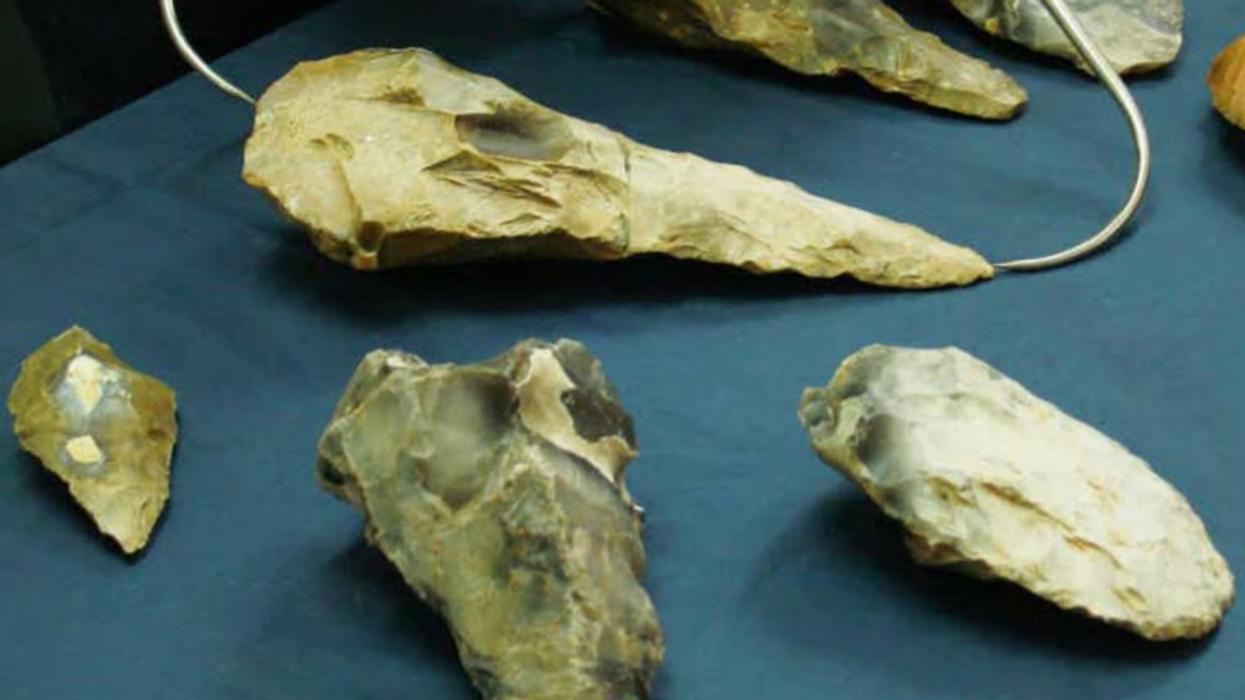
YouTube Wonder World Video Screenshot

Archaeologists recently unearthed giant prehistoric hand axes in England. Scientists are bewildered at the sheer size of the 300,000-year-old tools and are not positive how humans from the Ice Age used the giant hand axes.
Researchers from University College London discovered the giant hand axes in Ice Age sediments in an ancient river channel in the Medway Valley in southeastern England. The hand axes were found among 800 artifacts buried on a hillside in Frindsbury, Kent. The artifacts were found in the excavation site at Manor Farm that began in 2021. The ancient artifacts are believed to be from the Middle Pleistocene age.
The giant hand axes were crafted from flint stone and measure more than a foot long from tip to butt, plus have very thick bases. Scientists are baffled as to how prehistoric humans were able to use the large stone tools.
"We describe these tools as 'giants' when they are over 22cm long and we have two in this size range," senior archaeologist Letty Ingrey of the University College London Institute of Archeology said in a press release. Ingrey said one of the hand axes is the "longest ever found in Britain."
"These hand axes are so big it’s difficult to imagine how they could have been easily held and used," Ingrey added. "Perhaps they fulfilled a less practical or more symbolic function than other tools, a clear demonstration of strength and skill."
"Generally we think of hand axes as cutting tools like large knives with strong and sharp edges that would have been brilliant for butchering animals and cutting up meat," Ingrey continued. "We're just not sure if the size of this one meant it had another function or was used in a different way. 'Giant' hand axes like the one we found are real outliers, and it's no accident it was made this size. Whoever made it went to a lot of effort, firstly to find a piece of good quality flint big enough to make a tool of this size and then to carefully flake it and shape its long and finely worked tip."
Ingrey explained, "We think the artifacts date from an interglacial (warm period) between about 330,000 and 300,000 years ago. We have no human fossil evidence from the site, so no direct evidence of who was making it. However, we do know that Britain was populated at this time by early Neanderthal people, but there also could have been other archaic human species around."
At the time, the Medway Valley would have been a prime hunting ground for prehistoric humans, likely stocked with red deer, wild horses, as well as now-extinct straight-tusked elephants and lions.
Ingrey admitted, "Right now, we aren't sure why such large tools were being made or which species of early human were making them. This site offers a chance to answer these exciting questions."
Like Blaze News? Bypass the censors, sign up for our newsletters, and get stories like this direct to your inbox. Sign up here!
300,000 Year Old Giant stone artefacts discovered on rare Ice Age site in Kentwww.youtube.com